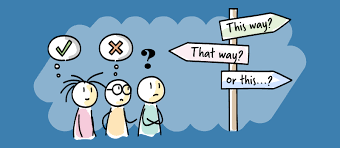The best decision-making techniques to use for making good selections and guaranteeing the best outcomes available
Table of contents
Why do you need to make better decisions?
Decision-making is a crucial aspect of our personal and professional lives. Every day we are faced with numerous choices, from simple ones like what to eat for breakfast to more complex ones like which job offer to accept. The quality of our decisions can have a significant impact on our lives, and the ability to make good decisions is an essential skill that can be honed with practice and the right techniques.
Advanced decision-making involves using more sophisticated techniques and strategies to make better decisions. These techniques are designed to help individuals and organizations make decisions that are informed, rational, and based on the best available information. In this article, we will explore some of the most effective techniques for advanced decision-making.

Analytical Decision Making
Analytical decision-making involves breaking down complex problems into smaller, more manageable parts. This technique involves gathering data, analyzing it, and then using that data to make informed decisions. This technique is especially useful when dealing with complex problems that require a structured and logical approach.
Intuitive Decision Making
Intuitive decision-making involves relying on your instincts and intuition to make decisions. This technique is often used in situations where there is limited time or information available. Intuitive decision-making can be effective when the decision-maker has significant experience and expertise in the area in question.
Collaborative Decision Makin
Collaborative decision-making involves involving multiple stakeholders in the decision-making process. This technique is often used in organizations to ensure that all stakeholders are consulted and their views are taken into account. Collaborative decision-making can be time-consuming, but it can lead to better decisions by incorporating diverse perspectives and ideas.
Cost-Benefit Analysis

Cost-benefit analysis involves weighing the costs and benefits of different options to determine which one is the most advantageous. This technique is often used in business and economics to evaluate the financial viability of different projects or investments. Cost-benefit analysis can be a valuable tool for decision-makers who need to make choices that will have a significant impact on the bottom line.
Scenario Planning
Scenario planning involves creating multiple hypothetical scenarios and analyzing how different decisions will play out under each scenario. This technique is often used in strategic planning to help decision-makers anticipate and prepare for different outcomes. Scenario planning can be a powerful tool for decision-makers who need to consider multiple factors and variables that could impact the outcome of their decisions.
Risk Management
Risk management involves identifying potential risks and taking steps to minimize or mitigate them. This technique is often used in business to identify and manage risks associated with different projects or investments. Risk management can help decision-makers avoid costly mistakes by identifying potential problems before they occur.

Decision Trees
Decision trees are a visual representation of the decision-making process that allows decision-makers to see the potential outcomes of different decisions. This technique is often used in business and finance to evaluate the financial viability of different investments. Decision trees can be a useful tool for decision-makers who need to consider multiple variables and factors that could impact the outcome of their decisions.
Conclusion
Advanced decision-making requires a combination of skills, techniques, and strategies. By using these techniques, decision-makers can make better-informed decisions that are based on the best available information. Whether you are making decisions for yourself or your organization, it is important to use a structured and logical approach that takes into account all relevant factors and variables. By doing so, you can increase your chances of making decisions that lead to positive outcomes and avoid costly mistakes.

The best decision-making Techniques by Peter Hanley
Why personal development is necessary
7 reasons you fail at online marketing
